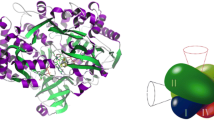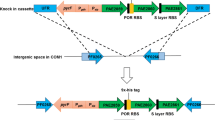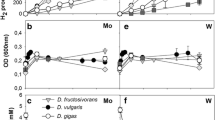Abstract
The aldehyde dehydrogenase activity of the sulfate-reducing bacterium Desulfovibrio simplex strain DSM 4141 was characterized in cell-free extracts. Oxygen-sensitive, constitutive aldehyde dehydrogenase activity was found in cells grown on l(+)-lactate, hydrogen, or vanillin with sulfate as the electron acceptor. A 1.83- to 2.6-fold higher specific activity was obtained in cells grown in media supplemented with 1 μM WO4 2–. The aldehyde dehydrogenase in cell-free extracts catalyzed the oxidation of aliphatic (K m < 20 μM) and aromatic aldehydes (K m < 0.32 mM) using methyl viologen as the electron acceptor. Flavins (FMN and FAD) were also active and are proposed to be the natural cofactors, while no activity was obtained with NAD+ or NADP+. 185WO4 2– was incorporated in vivo into D. simplex; it was found exclusively in the soluble fraction (≥ 98%). Anionic-exchange chromatography demonstrated coelution of 185W with two distinct peaks, the first one containing hydrogenase and formate dehydrogenase activities, and the second one aldehyde dehydrogenase activity.
Similar content being viewed by others
Author information
Authors and Affiliations
Additional information
Received: 7 February 1997 / Accepted: 6 June 1997
Rights and permissions
About this article
Cite this article
Zellner, G., Jargon, A. Evidence for a tungsten-stimulated aldehyde dehydrogenase activity of Desulfovibrio simplex that oxidizes aliphatic and aromatic aldehydes with flavins as coenzymes. Arch Microbiol 168, 480–485 (1997). https://doi.org/10.1007/s002030050525
Issue Date:
DOI: https://doi.org/10.1007/s002030050525




